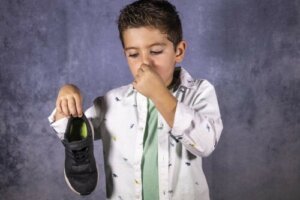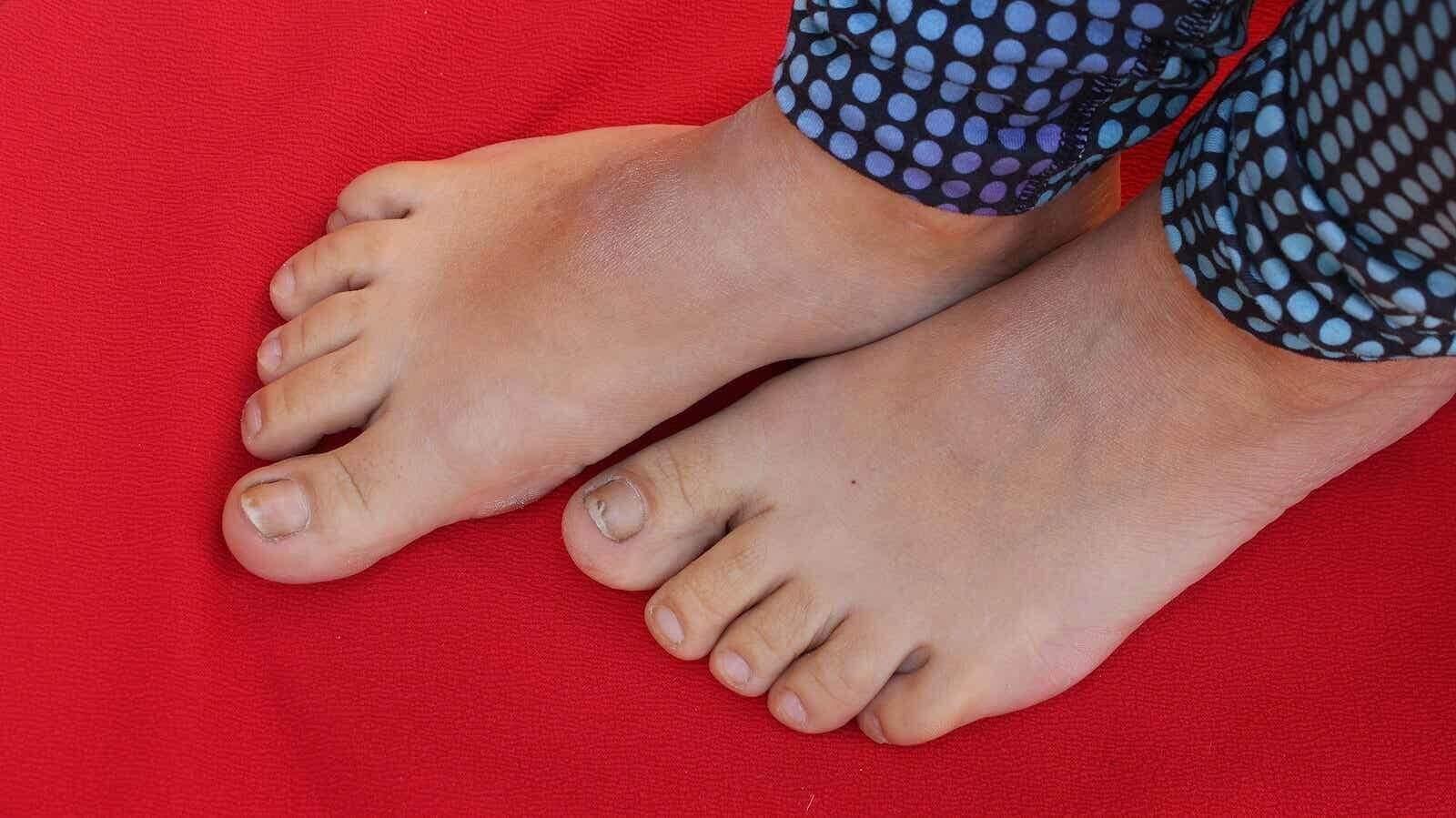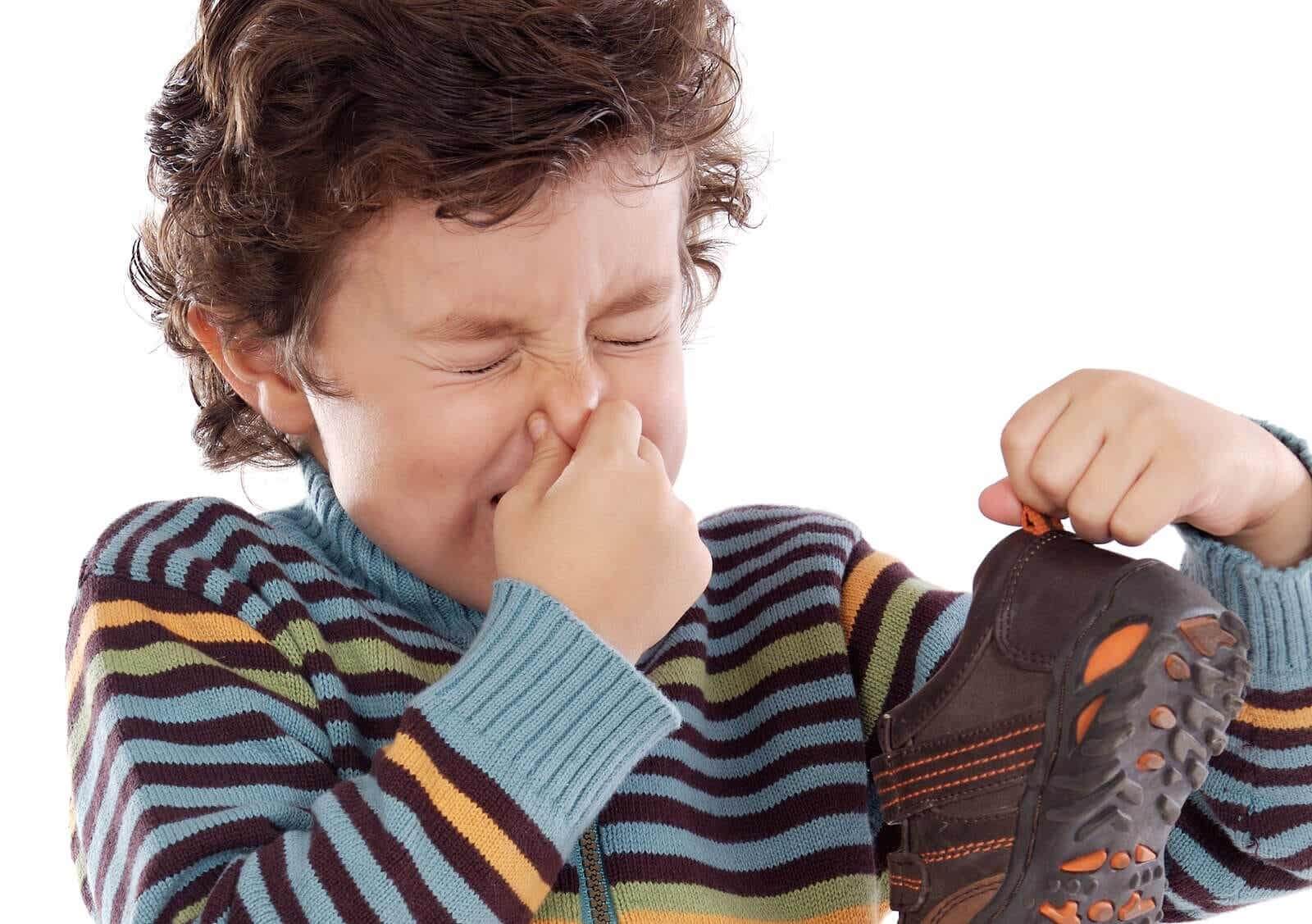10 Tips to Prevent Foot Odor in Children


Written and verified by the dermatologist Maria del Carmen Hernandez
Foot odor in children is a common condition that affects their relationships with the social environment. This can occur due to excessive sweating or hyperhidrosis, which creates a favorable environment for the spread of bacteria and fungi.
The development of bacteria on feet can lead to bacterial infection. Here are some tips to avoid foot odor in children.
Tips to avoid foot odor in children
Foot odor can be embarrassing for children. Also called bromhidrosis, it may be due to poor hygiene in combination with excessive sweating.
1. Choose cotton socks
Socks act as sweat filters when children perspire too much. In addition, the ideal socks are made of cotton because they absorb much more sweat, and let the feet breathe.
There are also some socks made of special fabrics for runners or athletes that also fulfill these functions perfectly.

2. Maintain proper hygiene and drying routine to avoid foot odor in children
It’s advisable to rinse the feet with soap and water twice a day to remove dirt or bacteria, but also scrub them from time to time. Then, dry the foot completely and try to do so thoroughly between the toes.
Children tend to rush the drying stage and avoid the region between the toes. For this reason, fungus can develop in this region of the foot.
3. Use antiperspirants for feet
The use of antiperspirants helps regulate excessive sweating due to their silicon or aluminum salt content. As a result, it prevents the creation of a moist environment that encourages the development of bacteria and fungi.
Unlike antiperspirants, deodorants only odorize the area where they’re applied, i.e., they don’t act on the function of the sweat glands.
4. Use a fungus treatment
One of the causes of foot odor is the presence of fungus in the interdigital area (the area between the toes) or even on the sole of the foot. The so-called athlete’s foot spreads through floors, swimming pools and showers. This clinical picture can be prevented with a correct daily hygiene, proper drying of the feet and the interdigital area, and the infrequent use of enclosed footwear.
5. Undergoing hyperhidrosis treatment
Hyperhidrosis is excessive sweating. It can occur for various reasons, from underlying diseases to adverse effects of certain drugs. In turn, it usually affects 5% of the population and is most often found at the level of feet, hands, armpits and scalp. However, there are several therapeutic options for this pathology, which help improve the quality of life of those who suffer from it.
6. Disinfecting footwear to prevent foot odor in children
The constant use of footwear coupled with sweating, causes bad odor and dirt inside shoes. It’s advisable to alternate the use of footwear to give them time to ventilate, and to rinse their insoles.
So, baby powder as well as baking soda have the property of absorbing moisture and putting an end to foot odor.
7. Choosing the right footwear
The choice of footwear is important in the prevention of foot odor. In fact, try not to wear enclosed shoes every day, all day long.
When you get home after doing activities in shoes, it’s best to opt for open-toed shoes to ventilate the feet and avoid generating moisture.
8. Clean the insoles
Even if sneakers or shoes should be washed, many people forget to rinse the insoles. They’re just another accessory that accumulates dust, dirt and bad odor.
Rinsing should be done with soap and water, and they should also be scrubbed with a brush. In addition, if you want to be more meticulous, you can use a specific disinfectant for footwear. This hygiene routine can be performed as often as you deem necessary.

9. Don’t share shoes
One of the most common practices among children is to share toys, clothes and even shoes. This isn’t advisable precisely due to the consequences it can bring about. In other words, athlete’s foot spreads easily when using other people’s shoes.
This habit also occurs in homes, where children inherit or share shoes with siblings. It’s ideal to rinse them correctly and thoroughly before starting to use them.
10. Cutting nails
Proper foot hygiene not only involves washing with soap and water, but also includes grooming the nails and trimming them regularly. Neglected nails contribute to the accumulation of dirt underneath, and to nail lesions such as onychocryptosis.
Teach your children to cut their nails in a rectangular shape in order to avoid the development of ingrown toenails. At the same time, maintain hygiene using a simple brush with soap and water.
Preventing foot odor in children
Ultimately, foot odor often affects children’s social relationships. They often feel embarrassed to take off their shoes in public, and it limits them in their daily activities with their friends. It’s essential to implement proper foot hygiene on a daily basis, followed by drying, cleaning and trimming of nails.
Foot odor in children is a common condition that affects their relationships with the social environment. This can occur due to excessive sweating or hyperhidrosis, which creates a favorable environment for the spread of bacteria and fungi.
The development of bacteria on feet can lead to bacterial infection. Here are some tips to avoid foot odor in children.
Tips to avoid foot odor in children
Foot odor can be embarrassing for children. Also called bromhidrosis, it may be due to poor hygiene in combination with excessive sweating.
1. Choose cotton socks
Socks act as sweat filters when children perspire too much. In addition, the ideal socks are made of cotton because they absorb much more sweat, and let the feet breathe.
There are also some socks made of special fabrics for runners or athletes that also fulfill these functions perfectly.

2. Maintain proper hygiene and drying routine to avoid foot odor in children
It’s advisable to rinse the feet with soap and water twice a day to remove dirt or bacteria, but also scrub them from time to time. Then, dry the foot completely and try to do so thoroughly between the toes.
Children tend to rush the drying stage and avoid the region between the toes. For this reason, fungus can develop in this region of the foot.
3. Use antiperspirants for feet
The use of antiperspirants helps regulate excessive sweating due to their silicon or aluminum salt content. As a result, it prevents the creation of a moist environment that encourages the development of bacteria and fungi.
Unlike antiperspirants, deodorants only odorize the area where they’re applied, i.e., they don’t act on the function of the sweat glands.
4. Use a fungus treatment
One of the causes of foot odor is the presence of fungus in the interdigital area (the area between the toes) or even on the sole of the foot. The so-called athlete’s foot spreads through floors, swimming pools and showers. This clinical picture can be prevented with a correct daily hygiene, proper drying of the feet and the interdigital area, and the infrequent use of enclosed footwear.
5. Undergoing hyperhidrosis treatment
Hyperhidrosis is excessive sweating. It can occur for various reasons, from underlying diseases to adverse effects of certain drugs. In turn, it usually affects 5% of the population and is most often found at the level of feet, hands, armpits and scalp. However, there are several therapeutic options for this pathology, which help improve the quality of life of those who suffer from it.
6. Disinfecting footwear to prevent foot odor in children
The constant use of footwear coupled with sweating, causes bad odor and dirt inside shoes. It’s advisable to alternate the use of footwear to give them time to ventilate, and to rinse their insoles.
So, baby powder as well as baking soda have the property of absorbing moisture and putting an end to foot odor.
7. Choosing the right footwear
The choice of footwear is important in the prevention of foot odor. In fact, try not to wear enclosed shoes every day, all day long.
When you get home after doing activities in shoes, it’s best to opt for open-toed shoes to ventilate the feet and avoid generating moisture.
8. Clean the insoles
Even if sneakers or shoes should be washed, many people forget to rinse the insoles. They’re just another accessory that accumulates dust, dirt and bad odor.
Rinsing should be done with soap and water, and they should also be scrubbed with a brush. In addition, if you want to be more meticulous, you can use a specific disinfectant for footwear. This hygiene routine can be performed as often as you deem necessary.

9. Don’t share shoes
One of the most common practices among children is to share toys, clothes and even shoes. This isn’t advisable precisely due to the consequences it can bring about. In other words, athlete’s foot spreads easily when using other people’s shoes.
This habit also occurs in homes, where children inherit or share shoes with siblings. It’s ideal to rinse them correctly and thoroughly before starting to use them.
10. Cutting nails
Proper foot hygiene not only involves washing with soap and water, but also includes grooming the nails and trimming them regularly. Neglected nails contribute to the accumulation of dirt underneath, and to nail lesions such as onychocryptosis.
Teach your children to cut their nails in a rectangular shape in order to avoid the development of ingrown toenails. At the same time, maintain hygiene using a simple brush with soap and water.
Preventing foot odor in children
Ultimately, foot odor often affects children’s social relationships. They often feel embarrassed to take off their shoes in public, and it limits them in their daily activities with their friends. It’s essential to implement proper foot hygiene on a daily basis, followed by drying, cleaning and trimming of nails.
All cited sources were thoroughly reviewed by our team to ensure their quality, reliability, currency, and validity. The bibliography of this article was considered reliable and of academic or scientific accuracy.
- Semkova K, Gergovska M, Kazandjieva J, Tsankov N. Hyperhidrosis, bromhidrosis, and chromhidrosis: Fold (intertriginous) dermatoses. Clin Dermatol. 2015 Jul-Aug;33(4):483-91. doi: 10.1016/j.clindermatol.2015.04.013. Epub 2015 Apr 8. PMID: 26051066.
- Perera E, Sinclair R. Hyperhidrosis and bromhidrosis — a guide to assessment and management. Aust Fam Physician. 2013 May;42(5):266-9. PMID: 23781522.
- Honig PJ, Frieden IJ, Kim HJ, Yan AC. Streptococcal intertrigo: an underrecognized condition in children. Pediatrics. 2003 Dec;112(6 Pt 1):1427-9. doi: 10.1542/peds.112.6.1427. PMID: 14654624.
- Bennett PC. Foot care: prevention of problems for optimal health. Home Healthc Nurse. 2006 May;24(5):325-9. doi: 10.1097/00004045-200605000-00011. PMID: 16699346.
- VYAGHRESWARDU G. Care of the feet in children. Indian J Pediatr. 1958 Jul;25(126):406-12. doi: 10.1007/BF02761791. PMID: 13586920.
- Staheli LT. Shoes for children: a review. Pediatrics. 1991 Aug;88(2):371-5. PMID: 1861942.
- Jain, Akansha y col. “Infecciones micóticas emergentes entre los niños: una revisión sobre sus manifestaciones clínicas, diagnóstico y prevención”. Revista de farmacia y ciencias bioaliadas vol. 2,4 (2010): 314-20. doi: 10.4103 / 0975-7406.72131
This text is provided for informational purposes only and does not replace consultation with a professional. If in doubt, consult your specialist.








